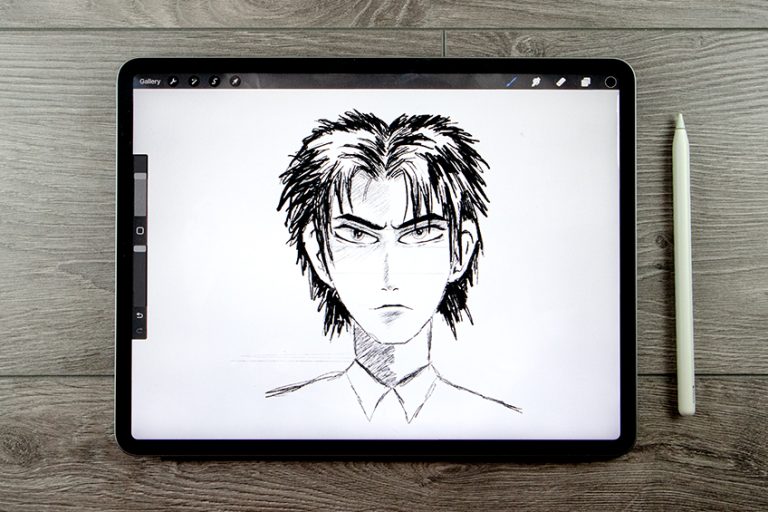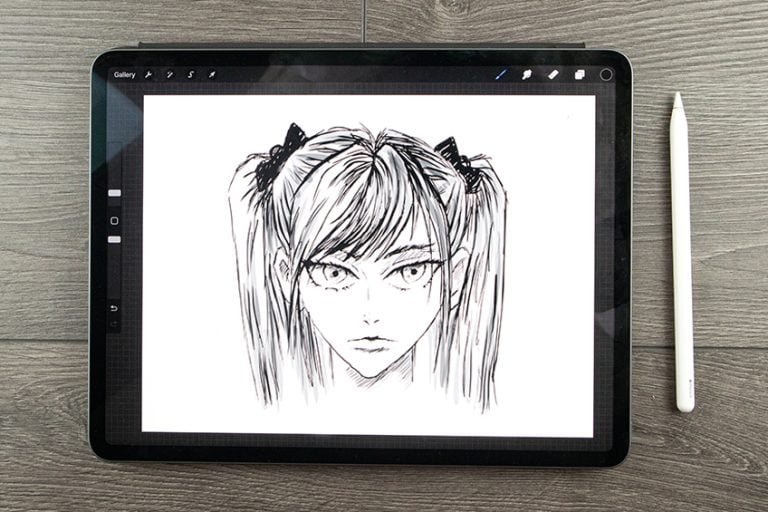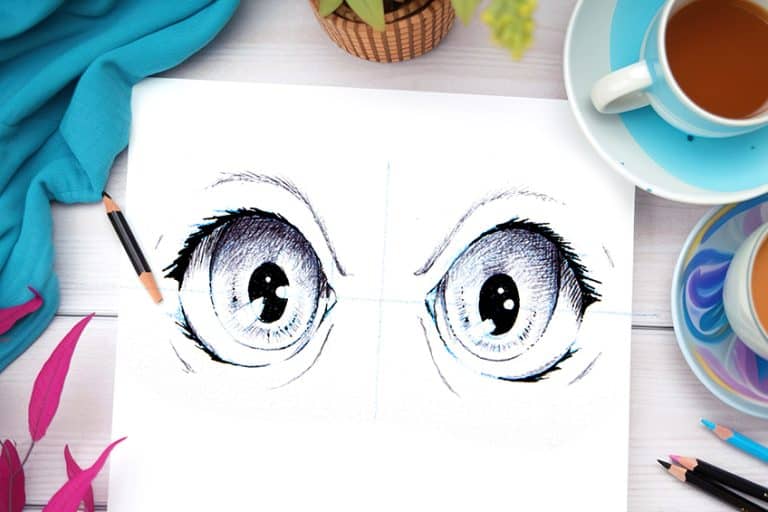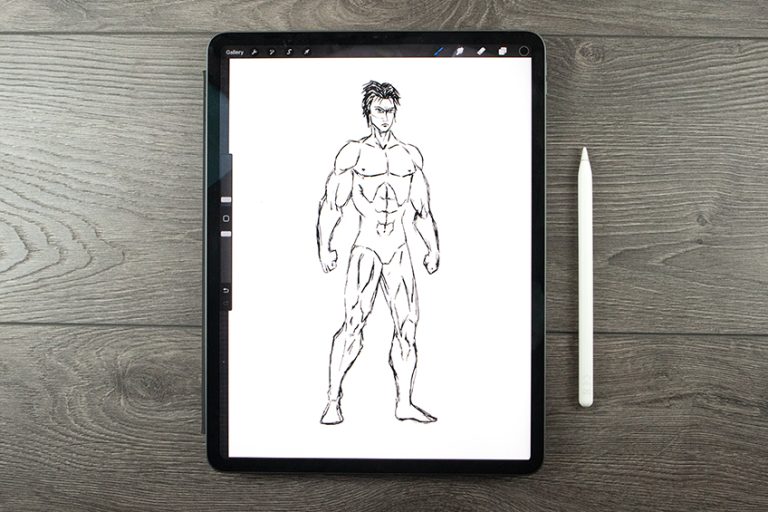How to Draw Chibi – Easy Drawing a Comic Character
In the genre of anime, we find that there is a further animated quality of characters, where they become chibi characters. This is basically when the character is defined as a more simplified and exaggerated version of itself to convey quirky aspects of its personality. Chibi drawing is really fun because it is easy to create, and can be a great addition to your character designs as a secondary aspect that depicts more playful aspects of the character. Learning how to draw a chibi character also provides you with a unique knowledge of overly exaggerated qualities in a character design, and how they can be emphasized for a doll-like effect on the character.
Table of Contents
An Easy Guide on How to Draw a Chibi
The Genre of anime and chibi drawing can seem complicated at first, however, we will find that the simplified aspects of drawing chibi-styled characters make the drawing process quite easy and fun. We’ll look at how to represent a character with some iconic chibi art style features, that will result in a unique chibi anime character. Drawing chibi-styled characters is really fun, and once you understand the chibi art style drawing process, you can play around with creating a variety of unique chibi-style drawings of your characters.
Necessary Materials
This tutorial on chibi drawing is done with a digital device, however, all drawing processes can be done with traditional mediums. Learning how to draw a chibi character doesn’t require fancy materials, so you can use whatever tools you have available to you.

Step-by-Step Guide on How to Draw an Anime Girl
In this tutorial on how to draw a chibi character, we will first break down the process of understanding proportions and unique features associated with a chibi character design. We will look at how to draw facial features and how to form clothing around the character within a female chibi drawing. Once we understand the basic principles of constructing a chibi character, we can then apply these concepts to another character with color. This time we can see how to utilize these principles to draw a male chibi anime character. applying these concepts to a male chibi anime character will help us to understand how these principles are easily applied to any character design and therefore how to create a variety of chibi character anime designs.

How to Form a Chibi Character
The process of forming a chibi character is quite simple once you understand the basic principles. Chibi characters are a more simplified version of anime characters with exaggerated features that emphasize their unique quirky characteristics. The process of creating a unique chibi anime style is simple, so let’s take a look at how we construct a female chibi character.
Step 1: Shaping the Body Parts in Three Segments
We start by establishing three evenly sized circles on top of one another, which will simplify the body into three even segments. These three even segments will reduce the shape of the body into these basic forms.
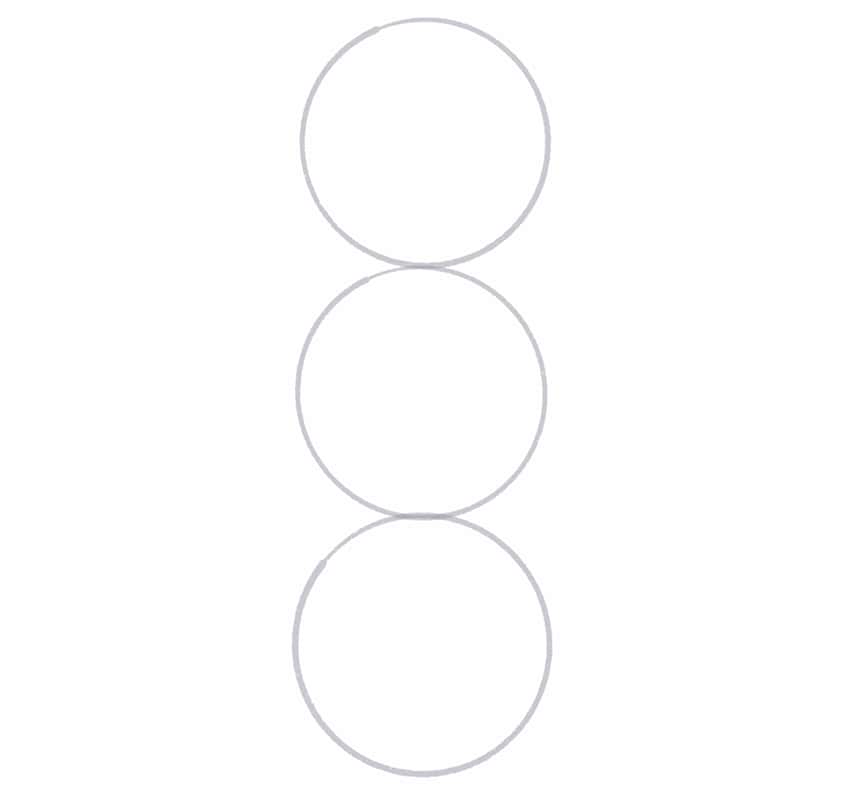
The three different segments will establish the placement of the head, body, and legs. The head of the chibi art style is generally a rounded bean-like shape, whereas the body is more of an elongated bean-like shape.

The legs of the chibi character will extend from the bottom section of the body bean shape into the lower third circle. The arms of the chibi character will also extend from the body but from the sides of the body bean shape.

Step 2: Adding Features to the Head
The head of a chibi can be drawn in many ways, however, we can play around with the hairstyle and how it sits on the head. The hairstyles tend to be quite playful and cute to emphasize the quality of cuteness.

The eyes of a chibi are generally large to exaggerate the baby-like quality of the chibi drawing. This makes them often quite circular in shape, and large in proportion to the head. The large eyes are an iconic feature of the chibi art style, and are therefore really important.

The eyes will be the largest feature on the face, however, we can play around with how the hair may slightly fall over the eyes. We can also keep the mouth quite petite, generally the mouth is much smaller in scale compared to the surrounding features.
To emphasize the baby-like features, we can add highlights to the eyes of the character to enhance their glossy nature. The eyes also tend to merge onto the eyebrows, however, you can play around with the shape of the brows for various expressions.

We can also add light shadowing to suggest a nose, as well as some highlights to the hair. The nose is optional and in many cases, chibi characters don’t have a nose. However, if you do add a nose, a good idea is to keep it very subtle.

You can play around with shadowing under the hair as it falls on the face. We can also add highlights, which further emphasize the textural qualities within the hair.

Step 3: Shaping the Features of the Body
The body of a chibi character is quite doll-like or baby-like, meaning that the features are generally stubby and minimalistic. This is why we use a bean-like shape to create the body structure. We want to keep the features simplistic and stubby, like a baby doll.

Step 4: Adding Clothing to the Chibi Character
Clothing is another major aspect of a chibi character that will define the character’s style and contextualize their identity. The chibi clothing design is really about how it emphasizes the personality traits of the character.

We want to think about body formation and how different attire forms around the shape of the body. This can be a combination of a button shirt and skirt to enhance the feminine quality of a female chibi character design.

In many ways, clothing is another aspect of contextualizing the identity towards either more feminine or masculine qualities. Chibi characters can be quite androgynous, making the clothing a major contextualizing feature.

Try to think of forming the clothing in different segments, utilizing the shape of the bean-like body parts to assist you. Try to imagine how the clothing would form around the bean-like character.
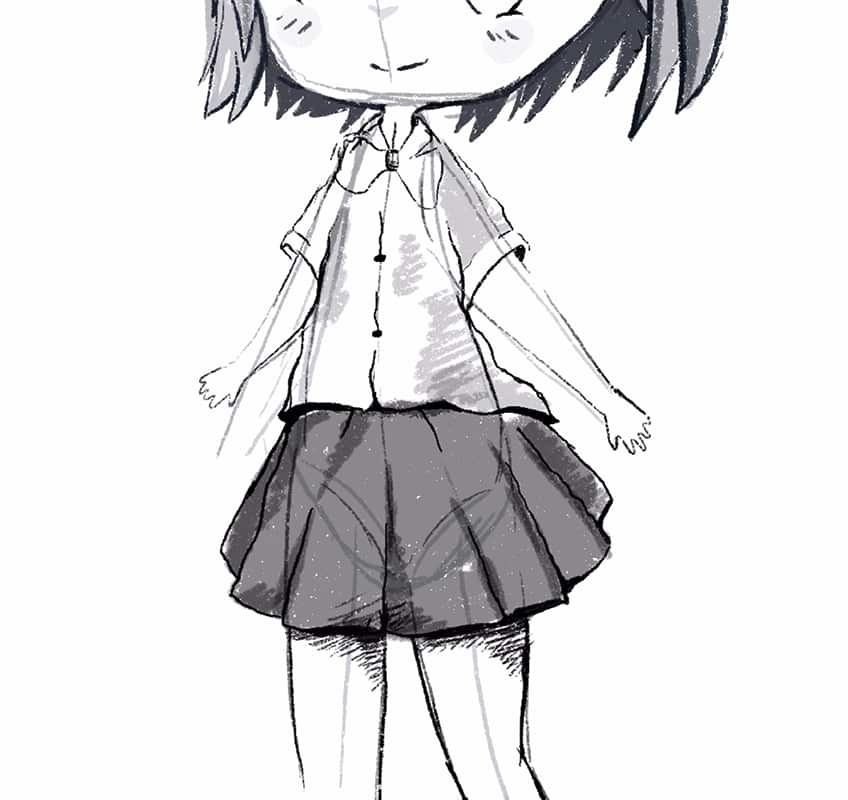
Once you have worked out the shape of the different items of clothing, you can then start to enhance them with some linework and tonal variation to bring more shape to the garments.

As we work our way down to the feet, again, keep the feet quite simplified. Try to think of the feet being a little more stump-like and petite, especially for female chibi drawings.

Step 5: Outlining the Chibi Character Features
Lastly, we can proceed by going over all the details of the character one last time, outlining and shading the various features to finalize their shape and form.

Creating a Chibi Character in Color
We can now create another chibi character, this time making a male character. However, now that we understand the principles of a chibi character design, we can apply these concepts to a male chibi drawing and integrate some color to see how it completes the design of the chibi-style drawing.
Step 1: Shaping the Character
We start once again by establishing three evenly sized circles on top of one another. From here, we can already start to draw in the bean-like shapes of the various features. Try to keep your sketch quote light at this point while you work out the different features of the character.

Once again, the intention is to allow yourself to play with the identity of the character with the previously learned principles. Think about hairstyle, enlarged eyes, and clothing as contextual features for your male chibi drawing.

Step 2: Refining the Character
We can now start to refine the character by going over the different features, starting with the head. Again, this is where we think about how the hairstyle affects whether the character may be more feminine or masculine.

We want to maintain the quality of enlarged eyes to represent the bay-like features in the face. However, we can play around with expressions on the face and the choice of clothing on the character.

Step 3: Playing Around with Color Combinations
When it comes to filling in the colors of the character, you want to think about how different colors have different effects on the character. We also want to think about how different colors work with different clothing styles.

In this case, we can see that having a blue coloration in the pants gives the impression of denim, and therefore represents a more casual quality in the character.

We also want to think about how the clothing sits slightly differently on a masculine chibi character, and how it suits the rest of the attire. In this case, we see that a pairing of a more casual top section works well with denim-like pants.

Step 4: Tonal Variation for Shape
With clothing, we also want to think about shadowing and how it makes the clothing more three-dimensional. We still want to maintain a quality of shadowing within various features of a chibi character, especially within the clothing.

By integrating darker tonal values of the different colors represented, we maintain the right coloration whilst creating shape within the fabric. We want to think about emphasizing these qualities through the shadow formations in the clothing.

When it comes to facial features, we can apply the same concepts, by working with various tonal values. We can add a variety of different layers to the hair and facial features to emphasize their structure.

With the eyes, we can create a gradient shift that becomes lighter from top to bottom. We also want to maintain a highlight within the eyes, to further emphasize the big baby-like eyes.

The idea is to work through the character and add color to the various features, to represent highlights and shadow formations. Take your time playing around with different color combinations.

Remember, we want to maintain a shadow formation within all features of the character, from head to toe. Keeping tonal variation in all areas will create consistency in the three-dimensional quality of the character design.

Lastly, there are no rules to how you color in your character, which means allowing yourself to experiment with different color combinations as well. Just keep in mind that the clothing style in conjunction with color choice will affect the personality of the character design.

And there you have it! how to draw a chibi through a few simple steps. Once you know how to form them, the process of creating variations in your chibi anime characters becomes quite easy.
Tips and Tricks to Remember
- Start with the proportions. Once you understand the proportions, you can tweak the features for a more unique aesthetic.
- Refine the shapes into features. Work with the bean-like shapes to represent the various features of your chibi character.
- Keep the features simple and baby-like. You always want the features to represent toddler-like proportions.
- Play around with clothing design. Clothing choice will always affect the character design, so take your time with drawing chibi-styled clothing.
- Experiment with color variations. Think about how color will affect your chibi anime character’s style.
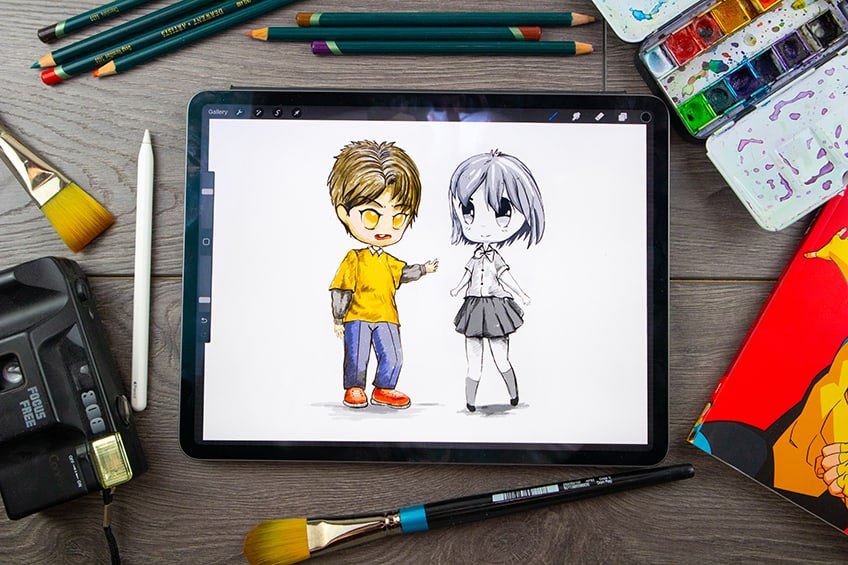
A chibi drawing is quite simple once you understand the basic principles. The idea is to always keep them looking quite doll-like and simplified in their features. A consistent feature is that the eyes remain large in chibi art, whilst the rest of the body can be modified to represent different character styles.
Frequently Asked Questions
How Do You Draw the Eyes of a Chibi Anime Character?
The eyes of a chibi art style drawing are often very large, so much so that they are much larger in proportion compared to its surrounding features. The idea around large eyes is that it emphasizes the doll-like quality of the character. There are many ways to draw the eyes within a chibi-style drawing, however, the intention is to always keep them fairly large in scale. In many instances, a more circular shape to the eye is a great way to emphasize a more innocent and playful expression within the face. This is an effective way to keep the doll-like aesthetic, which is iconic of the chibi art style.
How to Distinguish Between Male and Female Chibi Characters?
Anime and chibi drawings are often androgynous unless they are contextualized by other surrounding features. There are many ways to create a distinction between the two anime character design styles, and a good place to start is often with the hairstyle. The hairstyle can be a great way to define a more feminine or masculine quality. Another way to create a clear distinction is in the thickness of the eyelashes, with female characters having thicker eyelashes. Then lastly, we can define a more masculine quality in the clothing and how the clothing defines the shape of the character. The idea is to work with all features collectively defining either a masculine or feminine quality in the character.
Matthew Matthysen is an educated multidisciplinary artist and illustrator. He successfully completed his art degree at the University of Witwatersrand in South Africa, majoring in art history and contemporary drawing. The focus of his thesis was to explore the philosophical implications of the macro and micro-universe on the human experience. Matthew uses diverse media, such as written and hands-on components, to explore various approaches that are on the border between philosophy and science.
Matthew organized various exhibitions before and during his years as a student and is still passionate about doing so today. He currently works as a freelance artist and writer in various fields. He also has a permanent position at a renowned online gallery (ArtGazette) where he produces various works on commission. As a freelance artist, he creates several series and successfully sells them to galleries and collectors. He loves to use his work and skills in various fields of interest.
Matthew has been creating drawing and painting tutorials since the relaunch in 2020. Through his involvement with artincontext.org, he has been able to deepen his knowledge of various painting mediums. For example, watercolor techniques, calligraphy and lately digital drawing, which is becoming more and more popular.
Learn more about Matthew Matthysen and the Art in Context Team.
Cite this Article
Matthew, Matthysen, “How to Draw Chibi – Easy Drawing a Comic Character.” Art in Context. November 12, 2023. URL: https://artincontext.org/how-to-draw-chibi/
Matthysen, M. (2023, 12 November). How to Draw Chibi – Easy Drawing a Comic Character. Art in Context. https://artincontext.org/how-to-draw-chibi/
Matthysen, Matthew. “How to Draw Chibi – Easy Drawing a Comic Character.” Art in Context, November 12, 2023. https://artincontext.org/how-to-draw-chibi/.



